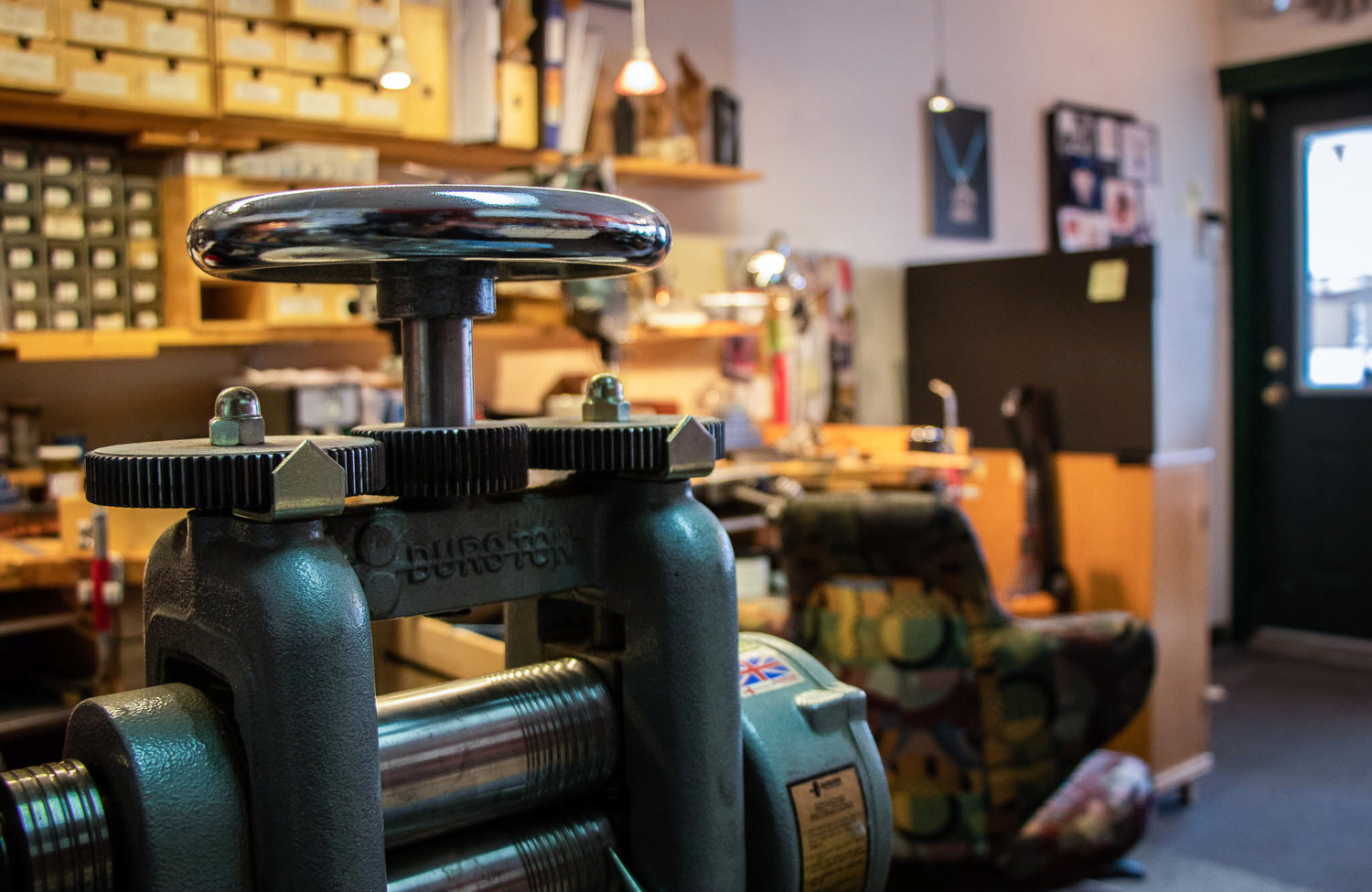Goldsmith
Levi Garber
Yukon Goldsmiths Design Studio in downtown Whitehorse is one of only three officially registered goldsmith studios left in the Yukon Territory. It sits in the historic Burns building on Main Street, originally built at the end of the Klondike Gold Rush in 1905.
David Ashley (pictured) and Cheryl Rivest opened the studio in the early 1990s and currently work mainly in custom orders.
Ashley began working as a production goldsmith after studying metal sculpting at the Philadelphia College of Art. He moved to Whitehorse in the late 1980s after falling in love with the territory during a motorcycle trip up the Alaska Highway.
A log home builder from the Dawson City area asked Ashley to sculpt a custom golden cap for a wolf claw he found on the job. In addition to unique pieces, Ashley says he also enjoys smithing more traditional works like rings and bracelets. “There’s nothing wrong with just making rings,” he says. “You get to see parts of people’s lives making rings.”
In addition to purchasing pure gold from the Royal Canadian Mint for projects, Ashley and Rivest buy gold directly from Yukon placer miners who still trek the tumultuous routes of the Klondike Gold Rush established over 100 years ago. By 2005, an estimated total of 1,250,000 pounds of gold had been recovered since the gold rush began, according to Canadian economist and Simon Fraser University economics professor Douglas Allen.
Ashley and Rivest’s studio is dotted by aged yet still functional goldsmithing and jewelry-sculpting machines and tools that look as old as the gold rush itself. They include a noisy centrifugal magnetic finisher, a large ring polisher and a crank-powered, jewelry-flattening mill (pictured).
The Klondike Gold Rush, which began in the final years of the 19th century and lasted well into the 20th, brought tens of thousands of prospective gold miners – then known as stampeders – to the Yukon from across Canada, the U.S., and the world. Ashley recalls stories he learned over his smithing career in a territory with such a rich history as he sculpts the finishing touches on the wolf claw cap. “Lots of people went to Dawson who had nothing anywhere else, so Dawson started to look pretty attractive,” he says. “They were nothing if not completely naïve in terms of how mining [works].”
Ashley fits the nearly completed gold cap onto the wolf claw.
Only a small number of customers stop by the studio daily, but Ashley doesn’t mind, he’s busy working on around two orders a day with a full working schedule until September. “Variety is what makes this interesting, so we do lots of custom orders and when custom orders are driving us nuts, we do stuff based around a theme,” he says. “We did a show on bugs, a show on the ocean, and two shows on the Vikings.”
Although the Klondike Gold Rush ended over a century ago, its make-or-break legacy lives on in small Yukon goldsmith studios like Ashley and Rivest’s.







![The Klondike Gold Rush, which began in the final years of the 19th century and lasted well into the 20th, brought tens of thousands of prospective gold miners – then known as stampeders – to the Yukon from across Canada, the U.S., and the world. Ashley recalls stories he learned over his smithing career in a territory with such a rich history as he sculpts the finishing touches on the wolf claw cap. “Lots of people went to Dawson who had nothing anywhere else, so Dawson started to look pretty attractive,” he says. “They were nothing if not completely naïve in terms of how mining [works].”](https://images.squarespace-cdn.com/content/v1/60ba769d0708692f8ac9cdf7/1626555754818-FLOUQATPTKL8FR7VDWY6/Gold_7.jpeg)


